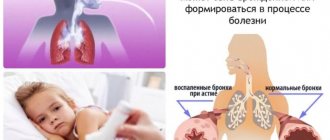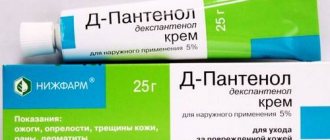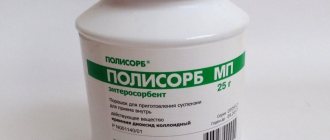Allergic adenoiditis in children: symptoms and treatment
Chronic inflammation of the nasopharyngeal tonsil is a fairly common problem among children under 14 years of age. For parents and doctors, it becomes especially relevant, because it is accompanied by dysfunction of the upper respiratory tract. And there is often a close connection between adenoiditis and allergies, which requires a separate approach to diagnosis and treatment.
Causes and mechanisms
A chronic inflammatory process in the pharyngeal tonsil is provoked by microbial agents. However, as research shows, it occurs and is maintained against the background of allergic restructuring of the respiratory tract. In a child, the cause of the latter is most often foreign substances of a household nature:
- House dust.
- Animal fur.
- Detergents.
- The fluff of the pillows.
They trigger the development of immediate hypersensitivity with the formation of reagins (immunoglobulins E). With allergies, biological mediators (histamine, prostaglandins, leukotrienes) are synthesized in tissues, which contribute to swelling and hypersecretion. And in combination with inflammatory proliferation of cellular elements, this leads to the growth of adenoids.
Adenoids and allergies in children are closely interrelated. The inflammatory process in the pharyngeal tonsil often takes a chronic form against the background of tissue sensitization to foreign substances.
Symptoms
The main signs of chronic adenoiditis are impaired nasal breathing. The tonsil increases in size, making it difficult for air to pass into the throat. This is accompanied by a characteristic clinical picture:
- Serous discharge from the nose.
- Nasal voice.
- Snoring and poor sleep.
- Ear congestion.
Due to decreased oxygenation of the brain, a child with severe hypertrophy of the pharyngeal tonsil often experiences decreased memory and attention, general weakness and lethargy, and deterioration in performance.
Externally, the half-open mouth, pale skin and blue circles under the eyes attract attention.
Adenoiditis in a quarter of cases is accompanied by allergic rhinitis, which is manifested by itching in the nose, paroxysmal sneezing, runny nose with profuse rhinorrhea and a feeling of stuffiness.
It should be noted that in children, adenoids lead to deformation of the facial skeleton: the lower jaw becomes narrow and elongated, the palate becomes high, and bite defects appear. As a result, the function of the speech apparatus also suffers. And in order to find out the origin of the violations in time, you should consult a doctor and undergo an examination.
With allergic adenoiditis in children, the symptoms are quite characteristic, so pathology can be assumed based on the results of a medical examination.
Additional diagnostics
If clinical signs of adenoiditis appear, you should seek medical help. In these cases, an examination by an ENT doctor with pharyngoscopy and rhinoscopy is mandatory. This will allow us to detect an enlarged pharyngeal tonsil and changes in the nasal cavity. But to identify the allergic process, laboratory tests will be needed:
- Complete blood count (eosinophils).
- Blood biochemistry (immunoglobulins E).
- Allergy tests.
These methods will give an idea of the presence of hypersensitivity and the factors that provoke it. Of course, you also cannot do without consulting an allergist. He will clarify the diagnosis and adjust the therapeutic program for the child.
Treatment
Allergic adenoiditis in children requires an integrated approach to treatment. With severe hypertrophy, when the tonsil completely blocks the entrance to the nasal cavity, it must be removed surgically.
In other cases, preference is given to conservative correction.
The fact is that lymphoid formations are protection against infections, and it is not advisable to deprive the child of a natural barrier - efforts should be directed towards combating hypertrophy and the allergic process.
Medicines play a major role in the treatment of pathology. Medicines are prescribed by a doctor and should be taken in accordance with his recommendations. There is a need for local and systemic medications:
- Antihistamines (Zyrtec, Fenistil, Azelastine).
- Topical corticosteroids (Flixonase, Beconase).
- Vasoconstrictors (Evkazolin, Nazivin, Vibrocil).
- Anti-inflammatory (Protargol, Bioparox).
- Homeopathic (Lymphomyosot, Euphorbium).
- Multivitamins.
Among the measures of conservative correction, physiotherapy is widely used - UHF, UV irradiation, laser therapy, endonasal electrophoresis. They will help remove inflammation and normalize the immune function of the pharyngeal tonsil.
Allergic adenoiditis is treated primarily with conservative methods. The operation is recommended only for severe hypertrophy of the tonsil.
Often, adenoiditis in a child develops against the background of sensitization of the respiratory tract and has allergic mechanisms. Symptoms and treatment of such pathology are pressing questions that many parents are looking for answers to. But you still can’t do without medical intervention.
Source: https://elaxsir.ru/zabolevaniya/nosa/allergicheskij-rinit-i-adenoidy-u-rebenka.html
Why does it occur
Before confirming that the cause of the disease is an allergy, it is necessary to exclude other provoking factors. Typically, the proliferation of lymphoid tissue is associated with the following points:
- Bad heredity. If the problem occurs in the parents, then the likelihood of its development in the child is very high. In this case, the disease may be associated with endocrine disorders and malfunctions of the lymphatic system. Such children experience apathy, weakness, and obesity.
- Difficult pregnancy. Difficult childbirth or illnesses suffered before it can cause adenoiditis in the future.
- Improper child care. A pathological process occurs if a woman does not follow a diet during breastfeeding and consumes a lot of sweets. Therefore, more attention should be paid to nutrition during this period.
Allergic adenoids in young children
Adenoids are a modified tonsil located in the nasopharynx. The main function of the organ is to fight bacteria and infection, creating a natural barrier that protects the human body from the allergen.
During the period of struggle, the size of the tonsil increases due to the proliferation of lymphatic tissue, and when recovery occurs, they return to their previous parameters. If the irritant is constantly present, the tonsil becomes pathologically large and inflamed. At the same time, it interferes with normal breathing and causes discomfort.
This condition is called “adenoiditis”. Allergic adenoiditis in young children (3-10 years) is a common phenomenon.
Causes
The main reason is increased sensitivity to the stimulus. Allergies can be triggered by:
- food products. Citrus fruits, chocolate, seafood, nuts, honey, etc. are considered especially dangerous;
- pollen of plants and trees;
- chemical compounds, household chemicals, cosmetics;
- medicines;
- dust mites;
- fur, skin flakes, saliva of pets;
- feather, bird down;
- poison that enters the bloodstream when insects bite.
Allergic rhinitis and adenoids in a child are often associated, since rhinitis is the main provocateur of swelling of the lymphatic tissue. Rhinitis is characterized by a runny nose and mucus from the nasopharynx.
The development of adenoiditis can also be provoked by:
- heredity - parents are allergic, therefore, there is a high probability of developing allergies in children;
- decreased immunity due to frequent illnesses;
- disruption of the hormonal and lymphatic systems, decreased function of the thyroid gland. Adenoids often appear in children who are overweight, lethargic, and apathetic;
- birth injuries;
- a woman suffered an infectious disease during the first trimester of pregnancy and took potent medications;
- unbalanced diet of the mother during breastfeeding - consumption of many sweets, fatty foods, and alcohol.
Degrees of adenoid development
Depending on the size of the tonsil growth, the following are distinguished:
- 1st degree. With it, the connective tissue covers no more than a third of the nasal passages. The child breathes normally during the day, but at night, due to the rush of blood, the adenoids swell slightly, and he begins to breathe through his mouth, sniffle, snore;
- 2nd degree. The nasal passages are closed by more than 60%. The baby is forced to breathe with his mouth slightly open, speech becomes unintelligible, his voice becomes nasal;
- 3rd degree. The nasopharynx is practically blocked by overgrown connective tissue. The patient can no longer breathe through his nose at all.
Diagnostics
The diagnosis is made by an ENT doctor (otorhinolaryngologist). The main methods for recognizing adenoids are:
- endoscopy and computed tomography are modern and most common methods that allow you to see the condition of the patient’s various organs on a computer screen;
- radiography. Allows you to determine the size of formations. It has negative aspects - there is radiation exposure on the child’s body;
- palpation is used extremely rarely. The examination is painful, and the result is subjective.
To confirm the connection of the disease with allergies, blood is taken for analysis. In case of an allergic reaction, immunoglobulin E and eosinophil levels will be higher than normal.
Treatment
Therapy is prescribed by a doctor. Most often, medication and special procedures are prescribed. An important condition is to eliminate contact with the allergen.
Medications
May be assigned:
- Antihistamines - Pipolfen, Suprastin, Loratadine, Diazolin, Fenkarol, etc.;
- Nasal drops that will constrict blood vessels and remove swelling and runny nose - Sanorin, Tizin, Cromohexal, Vibrocil, etc.;
- For rinsing the nose - solutions with sea salt - Aqua Maris, Humer, Aqualor, etc.;
- Enterosorbents for rapid removal of the allergen - Enterosgel, Polysorb, Smecta, Polyphepan, etc.;
- Immunostimulants that increase the body's defenses - Immunal, echinacea tincture, Amiksin, Cycloferon, etc.;
- Vitamin and mineral complexes.
Physiotherapeutic methods
Most often recommended:
- Inhalations – dry, wet, salt;
- Electrophoresis with medicinal drugs. Not prescribed for children under 3 years of age;
- Laser therapy. The procedure improves blood circulation in the affected area and eliminates the symptoms of the disease;
- Ultraviolet irradiation – removes swelling and eliminates pathogenic microflora;
- Magnetic therapy – relieves pain and normalizes metabolic processes in tissues;
- Darsonvalization.
Surgical methods
If adenoid hypertrophy is due to allergies, surgery to remove the adenoids is performed only as a last resort.
The main argument of opponents of the operation is that the child is deprived of natural protection, since the tonsils act as a barrier to infection.
If the adenoids are removed too early (before 7-8 years), the development of tracheobronchitis or bronchial asthma is possible. In addition, if the allergen is not eliminated, one operation will not help; after a few months the formations will appear again.
If you use conservative methods, there is a high probability that by the age of 10-12 years the tonsils will return to normal. This is due to the fact that the immune system is finally formed and strengthened.
Indications for which surgery becomes necessary:
- severe oxygen deficiency occurred;
- the middle ear cavity is filled with mucus, which threatens deafness;
- maxillofacial pathologies began to appear;
- the tissue degenerates into a malignant state;
- if conservative therapy helps little, and exacerbation of the disease occurs more than four times a year.
The decision in each specific case is made by the doctor. If it is decided to have surgery, it is carried out while taking antihistamines.
Traditional methods
With their help, you can alleviate the patient's condition. But they will not replace other methods of therapy. Before use, you should consult a doctor, since medicinal herbs themselves can provoke allergies.
Recipes:
- Rinse the throat well with a decoction of chamomile, oak bark, eucalyptus leaves, and tea;
- You can instill sea buckthorn, eucalyptus, thuja, and olive oil into your nose;
- 4 tbsp. l. horsetail pour 0.5 liters. boiling water, boil for 10 minutes, leave for an hour. Rinse the nasopharynx twice a day;
- Dissolve 1 g mummy in 5 tbsp. l. warm water, drip into the nose.
Prevention
It is necessary to protect the patient from contact with the allergen as much as possible. Remove foods from your child's diet that may aggravate the disease. Do wet cleaning more often.
During the flowering of trees and plants, walk with your baby in the morning and evening, as well as after rain, when pollen is washed to the ground.
Measures that lead to overall health of the body and strengthening of the immune system are useful - good nutrition, hardening, an established regime.
Allergic adenoiditis causes many problems, but the statement that a complete cure is impossible is erroneous. Timely diagnosis and treatment are necessary. Strict adherence to the doctor’s recommendations will quickly improve the child’s condition and avoid many serious complications.
Source: https://allergiya03.com/deti/allergicheskie-adenoidy.html
Prevention
Preventive measures for adenoiditis include:
- improving the functioning of the immune system (hardening, taking vitamins, moderate physical activity, staying outside);
- timely treatment of infectious diseases of the respiratory tract and allergic reactions;
- balanced diet;
- vaccinations.
By following these simple instructions, it is possible to prevent the occurrence of such unpleasant symptoms. The disease appears when hypersensitivity to any irritant develops. Often results from allergic rhinitis. Such a disease is fraught with various complications, such as changes in appearance, snoring, inability to breathe through the nose, etc. In such situations, it is not possible to eliminate allergic adenoiditis without surgical intervention.
Allergic adenoiditis in children: causes, treatment
Allergic adenoiditis is a frequently diagnosed disease in preschool children and primary schoolchildren. This is the name for an inflammatory lesion of the pharyngeal tonsil caused by allergens. Pathology is the cause of the development of hypertrophy of the organ (adenoids). At the same time, the tonsil increases in size.
This upper respiratory tract disease responds well to conservative treatment. After the destruction of allergens, the tonsil restores its original size. This process may be hampered by long-term exposure to non-infectious agents. In this case, the deformation of the organ remains, the functions of the tonsils are impaired.
It is important to identify allergic adenoiditis in time. An advanced disease or poor treatment can cause serious complications that are dangerous to the child’s health.
What are adenoids and adenoiditis
One of the six tonsils located in the nasopharynx and forming the pharyngeal ring is localized at its fornix. It is the third in a row and is called pharyngeal. Consists of lymphoid tissue produced by immune cells. Detains pathogenic microorganisms, dust, harmful and toxic substances. Participates in hematopoiesis.
The amygdala only works in childhood. The strengthened, developed immunity of an adult copes with protective functions. After this, the amygdala atrophies and no longer works.
The action of pathogenic factors causes hypertrophy of lymphoid tissue - adenoids (adenoid vegetations). In this case, the inflamed tonsil grows and enlarges so that it can even be detected visually. Its structure becomes denser. The main cause of hypertrophy is infectious and allergic effects.
Adenoids and allergies in children require in-depth diagnosis and a special approach to treatment to prevent the development of the inflammatory process. This form of the disease can be severe and difficult to treat.
Causes of adenoiditis
Let us list the causes and predisposing factors that subsequently influence the development of the disease. Most often these are household allergens. These include:
- household dust, feather pillows, dust mites, their secretions, mold;
- washing, cleaning, disinfecting chemicals;
- saliva, epidermal cells, urine, pet dander;
- poison of insects and snakes.
The effect of other allergens that cause adenoids in children is also known.
They are:
- plant pollen, poplar fluff;
- food products with high allergic activity;
- some medicinal substances.
Highly allergenic foods include milk, fish, seafood, eggs, and all types of nuts. The development of the disease is also provoked by citrus fruits, strawberries, raspberries, black currants, and melons.
Drug allergens most often include drugs - penicillins, sulfonamides, analgin, novocaine, some vitamins, aspirin and others.
Weakened immunity in the absence of breastfeeding, incomplete development of some organs and systems in the child’s body are factors contributing to the occurrence and development of the disease.
The baby’s sensitive body reacts by producing antibodies (immunoglobulin E) to the first penetration of a foreign protein, which is an antigen. The next arrival of allergens is accompanied by an attack of antibodies and the formation of immune complexes.
They damage the mast cells of the immune system. This causes the active release of inflammatory mediators into the blood, which significantly affects the lymphoid tissue of the pharyngeal tonsil. Severe symptoms of allergic adenoiditis appear in children.
Symptoms of allergic adenoiditis
When examining a sick child, the first manifestations of adenoiditis against the background of allergies are noticeable:
- Hyperemia, swelling in the nasopharynx.
- Enlarged pharyngeal tonsil.
- Loose structure of adenoids.
They are similar to the symptoms of acute respiratory infections and acute respiratory viral infections. There are indeed many signs of allergic adenoiditis in children. They are divided into local and general.
Local signs are:
- inflammation of the nasal mucosa with runny nose, congestion, itching;
- pain and burning in the nasopharynx;
- development of nasality;
- snoring, sleep disturbance;
- feeling of stuffiness in the ears.
The main symptom of the disease is impaired nasal breathing. In cases of severe development of allergic adenoiditis, it is absent, and the child breathes only through the mouth.
General signs of pathology are as follows:
- body temperature is increased to 39°C (in the last stages of the disease), there is no fever;
- cervical lymph nodes are enlarged and painful;
- attention is scattered, memory is impaired, thinking is inhibited;
- weakness, fatigue appear, and a decrease in performance is observed.
An advanced form of adenoiditis in children is characterized by such a symptom as an adenoid face. At the same time, the lower jaw lengthens and narrows, the chin flattens, and the upper teeth become crooked. Therefore, bite and speech are impaired.
Three degrees of adenoiditis in allergies are classified according to the proliferation of lymphoid tissue of the tonsil and the narrowing of the lumen of the nasopharynx because of this. They are manifested by symptoms:
- blocking of the nasopharynx by adenoids by a third, respiratory failure during physical exertion (first - initial - degree of development of the disease);
- in the second degree: growths close the lumen to 2/3, discharge from the nasal cavity appears, snoring, the mouth is open, partial nasal breathing, the middle ear becomes inflamed, sinusitis develops, changes in the lower jaw begin;
- in the third degree of allergic adenoiditis, the nasopharynx is completely blocked, so they breathe only through the mouth; the adenoid face is clearly expressed; the child’s cognitive abilities are deteriorating; weakness, headaches, frequent colds, sinusitis, otitis appear; speech and voice change.
The severity of the third stage of the disease occurs due to an insufficient amount of oxygen entering the body through the mouth. At the same time, its warming, disinfection, and hydration are impaired. All these functions are performed in the nasal cavity.
At this stage of adenoiditis, due to allergies, the child’s mental development begins to lag, so a timely visit to a pediatric otolaryngologist is very important.
Possible complications
Advanced allergic diseases of the pharyngeal tonsil take a long time to treat, and in some cases irreversible processes develop. Complications of adenoids are often diagnosed in various types of allergies in children. These include:
- deformation of the facial part of the skull;
- hearing impairment (hard of hearing, deafness), speech;
- frequent diseases of the upper respiratory tract in acute and chronic form;
- stopping breathing during sleep (night apnea);
- retardation in mental and physical development;
- anemia;
- development of a keeled chest (chicken breast);
Complications of adenoids in children lead to decreased learning ability and communication problems in the team. This greatly complicates the lives of parents and children.
After successful treatment of the disease, the habit of breathing through the mouth may remain. This can affect the child's bite formation. The functioning of the respiratory system has been restored, so giving up the habit is not difficult. It is necessary to consult a doctor and eliminate it.
Diagnostics
When the first signs of allergic adenoiditis appear, you should consult an ENT doctor.
In order to diagnose adenoids, modern doctors use several methods:
- Endoscopy. This method is a procedure for examining the tonsils using an endoscope - a special camera in the form of a tube. This is by far the safest and most accurate method.
- Radiography. This method very easily determines the disease, however, it is practically not used in diagnosing adenoids in children, since radioactive radiation is harmful to the child’s body.
How dangerous is allergic adenoiditis and how to treat it?
Adenoiditis is the most common disease among all ENT diseases in children under 10 years of age. Both children and adults can also be bothered by a disease caused by allergic adenoids. It is important to recognize the cause of adenoiditis in time and begin treatment.
What role do adenoids play?
Adenoids are called the nasopharyngeal tonsil, which serves as a kind of filter for the body and prevents pathogenic microflora and viruses from entering the body. However, under certain conditions, the tonsil can become inflamed, which causes its enlargement.
Adenoiditis most often affects children under 10 years of age. In adults, the disease is very rare, since over the years the tonsil becomes much smaller or disappears altogether. Although, enlargement of adenoids due to an allergic reaction can also occur in adults.
Very often children who attend kindergarten suffer from adenoiditis. This is explained by a change in environment, new microbes, and also a large number of their new carriers - children in the garden.
Everyone is familiar with the term “adaptation period,” which almost all children in kindergarten go through. Children's immune system is in the process of formation, which means it is still weak. Because of this, in a new environment and regularly in contact with a large number of people, the child is constantly exposed to viruses and infections. This explains the frequent illnesses of kindergarten children.
Over time, the body gets stronger, the immune system too, diseases bother us less and less. However, this does not happen for everyone. As a result of constant illnesses, chronic diseases and other consequences can arise that only a doctor can cope with.
One of the complications may be adenoiditis.
Types and degrees of adenoiditis
To properly understand, you need to start from the roots of the problem. So, adenoiditis occurs with frequent inflammation of the pharyngeal tonsil.
There are several types of adenoiditis:
- spicy;
- chronic;
- allergic.
Acute adenoiditis is one of the types of allergic adenoiditis
The constant entry of viruses and bacterial infections into the body is the most important cause of acute adenoiditis. It develops rapidly and can cause an increase in body temperature. There is also an unpleasant sensation in the nose, which is especially pronounced when swallowing. In the acute form of the disease, the nose is constantly stuffy, a frequent night cough is bothersome, and the throat may turn red.
The patient may experience pain in the palate, radiating to the ears and nose, and headaches.
Often the cause of acute adenoiditis is tonsillitis. At the same time, the tonsils become enlarged, and recovery is delayed. Often there is an enlargement of the submandibular lymph nodes, which become painful upon palpation.
Along with the acute phase of the disease, concomitant diseases may also occur:
- acute otitis;
- cervical lymphadenitis;
- purulent runny nose, etc.
The chronic form of adenoiditis occurs after the acute form and has less pronounced symptoms. However, chronic adenoiditis leads to pathology of the lower respiratory tract, ear disease and disorders in the sinuses.
The most striking signs are:
- constant runny nose with pus;
- difficulty breathing through the nose;
- regular nasal congestion;
- exacerbation in the form of increased temperature.
If chronic adenoiditis is not treated, sinusitis and purulent otitis may develop.
Despite the completed course of treatment, the chronic form of the disease may persist and periodically make itself felt. This distinguishes it from the acute form.
Allergic adenoiditis accounts for 20% of all cases. The number of children with allergies increases every year. This is influenced by the environment, the low quality of consumed products and the child’s weak immune system.
Allergic adenoiditis is promoted by allergic rhinitis. The most common causes of its occurrence are contacts with household allergens and plant pollen.
The most famous household allergens are:
- house dust;
- mold;
- animal fur.
Adenoiditis, which occurs against the background of allergies, is a special form that requires an individual approach and treatment.
Degrees of adenoiditis
There is not only a form, but also a degree of adenoiditis. So, adenoiditis can be of four degrees:
- the first is when one third of the nasopharynx closes. The child suffers from a night cough, and during the day it is practically absent. This is explained by the influx of venous blood during a horizontal position, which leads to enlargement of the tonsils. Breathing becomes difficult, causing the child to breathe through his mouth;
- second - two thirds of the nasopharynx are closed;
- the third is the nasopharynx completely closed by adenoids.
The last two degrees are accompanied by frequent breathing of children through the mouth, even during the daytime. The child may snore, cough frequently, and there is a feeling of choking.
What happens if adenoiditis is not treated?
Inaction during adenoiditis can lead to dire consequences.
When a child is constantly breathing poorly, less oxygen reaches his brain. This can cause lack of sleep, irritation, headaches, decreased reaction, and poor development.
Advanced forms of the disease can also cause growth disturbances in the facial bones. The alveolar area of the upper jaw is most susceptible. The face takes on a narrow and long shape, the teeth grow crookedly, the incisors protrude forward. Because of all this, the child’s speech is impaired.
The disease can affect the appearance of the child, when the face is constantly pale, the mouth is slightly open, and the nasolabial folds are smoothed.
Treatment of allergic adenoiditis
Treatment for allergic adenoiditis varies significantly. Sometimes it is enough to find out which allergen causes such a reaction in a child and exclude contact with it.
In more advanced forms of the disease, treatment with corticosteroids may be necessary, and removal of the tonsils for allergic adenoids is very rare.
The treatment is carried out by an allergist.
Self-medication in this case is not recommended. Many parents consider the primary task to find out the degree of enlargement of the adenoid, they initially start from this, and are mistaken.
The main thing is the individual structure of the child’s nasopharynx and the nature of the disease. These factors are decisive when choosing treatment. That is why it is so necessary to seek help from a specialist, and not treat the child at home.
Today, the most effective treatment for adenoiditis against the background of an allergic reaction is the use of internal aerosols of corticosteroids.
When administering the drug (mometasone furoate, fluticasone propionate) 2-3 times a day, treatment can last from 1 to 4 weeks, depending on the severity of the disease.
Clinical studies have shown that drug accumulation occurs already by the end of the 2nd week. Thanks to this, stimulation and restoration of the reproduction of immune cells occurs. It also helps restore the immune barrier.
Surgery - pros and cons
Today, there are more and more supporters of conservative therapy for adenoiditis. Surgery is performed only in extreme cases and when there is a threat of serious complications.
Allergic adenoiditis cannot be treated surgically at all, although there are exceptions.
As studies show, if it is possible to cure the disease with the help of medications and physical procedures, the child recovers faster and can even be completely cured.
After surgery, recovery takes a longer time, complications and relapses are often observed.
It should be remembered that children under 5 years of age are not recommended to have their adenoids removed. This is associated not only with risk, but also with the possible regrowth of adenoids.
Possibility of treatment at home
Although the first stage of allergic adenoiditis is not so dangerous, you should not neglect consulting a doctor. You can treat a child at home if the health worker himself gives the green light.
At the initial stage, the disease does not require any manipulation, except for the exclusion of allergens and the use of medications for the sinuses.
Don't forget about your daily routine, which plays an important role in the recovery process. Frequent walks in the fresh air are recommended; it is necessary to exclude the child from hypothermia or overheating. During treatment, it is advisable to exclude the child from being too active.
Diseases similar to adenoiditis
Similar symptoms can be signs of different diseases. If we talk about the symptoms of adenoiditis, they are similar to the signs of such ailments:
- lymphocytic leukemia;
- sinusitis;
- herpetic sore throat;
- pneumonia;
- rhinopharyngitis.
Sinusitis is a disease similar to adenoiditis
Pneumonia occurs due to damage to the lungs by viruses, bacteria and infections. With weak immunity, the body cannot fight the disease on its own, which is why, if treatment is refused, there is a risk of death. This disease is also known as pneumonia.
The symptoms of adenoiditis can easily be confused with the symptoms of herpetic sore throat. This is an infectious disease that often affects children. It is young children who are most often susceptible to herpetic sore throat. Along with the main symptoms, accompanying symptoms may also be observed in the form of nausea, vomiting, fever, difficulty swallowing and rashes in the area of the palate and pharynx.
With lymphocytic leukemia, a malignant formation forms in a person in the form of a concentration of tumor lymphocytes. It can affect not only the lymph nodes, but also the bone marrow.
Sinusitis is an inflammation of the sinuses or sinuses caused by a bacterial or viral infection. Chronic and acute phases are possible. Sinusitis is especially often confused with allergic sore throat, since cases of allergic sinusitis are common.
With rhinopharyngitis, the pharynx and nasal mucosa become inflamed. Often its symptoms coincide not only with pharyngitis and sinusitis, but also with adenoiditis. However, nasopharyngitis can manifest itself due to advanced and acute pharyngitis.
Folk remedy - thuja oil
For treatment with traditional methods, drops with thuja oil are perfect. Thanks to their effects, you can relieve swelling, ease breathing and even shrink adenoids.
Thuja oil is most often used in the form of essential oils or a homeopathic preparation.
Thuja essential oil is diluted in a ratio of 1:7. In its pure form, thuja essential oil is dangerous due to the toxins it contains. A homeopathic preparation based on thuja oil for the treatment of adenoiditis is used in a concentration of 15%.
For adenoiditis, the effectiveness of steam inhalations based on thuja oil has been proven. The therapy also includes massage, which will require the addition of other oils.
Thanks to such simple treatment methods, it is even possible to avoid surgical removal.
Diagnosis and treatment of allergic adenoids in children is best done under the supervision of a doctor. Although the use of traditional methods is allowed, consultation with a doctor should not be delayed.
If allergic adenoiditis is not treated, it will make itself felt more and more often, and the likelihood of complications and possible surgical intervention will be high.
Today, allergic adenoids in children and adults, unfortunately, are not uncommon. To get rid of the disease, you need to consult not only an ENT doctor, but also an allergist.
Modern treatment methods are based on a non-surgical solution to the problem. Every year, doctors are less and less likely to prescribe adenoid removal and are increasingly inclined to drug treatment.
Source: https://zdorovie-legkie.ru/allergicheskie-adenoidy-01/
Allergic adenoiditis
Chronic inflammation of the nasopharyngeal tonsils under the influence of an allergen is called allergic adenoiditis . The disease often progresses in preschool children, negatively affects the immune system, and is prone to chronicity and relapse. The trigger attacks the airways, which were protected by healthy tonsils.
If the adenoids have enlarged due to allergies and have not returned to their original position, the health problem gets worse. You cannot do without an individual consultation with an otolaryngologist. Adenoids and allergies are more common ; this disease is unusual for adults (isolated cases are known).
Causes of adenoids
To solve a health problem, first of all, it is important to understand why adenoiditis of allergic origin . The main thing is to correctly identify the provoking factor. Allergens that cause the growth of adenoids are household dust, animal hair, pollen, bird fluff and feathers, chemicals, etc.
With short-term exposure to an allergen, the adenoids in children return to their original position.
Otherwise, the lymphoid tissue continues to grow pathologically and become coarse, breathing is disrupted, the child’s general well-being dynamically worsens, and sleep is disturbed.
There is a high probability of morbidity with weakened immunity, long-term use of medications, and hypersensitivity reactions of the body.
Important: without determining the nature of the provoking factor, allergic adenoiditis in children is difficult to treat conservatively. Due to the patient’s ignorance and the doctor’s incompetence, the disease soon becomes chronic.










